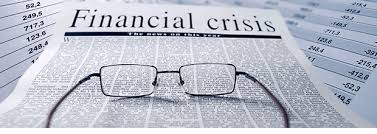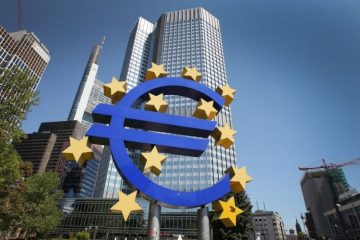Rethinking the Fed: More Tightening than Priced In? Next Financial Crisis Coming Up?

Time and time again, the Fed sows seeds of the next financial crisis in actions it takes to mitigate the previous financial crisis that it caused.
Have we reached that point yet?
The Guardian reports Central Banks Raise Alarm Over New Crash After Steep Rise in Lending.
Soaring stock markets, which have become detached from underlying values, were another sign that unjustified exuberance had replaced last year’s overly pessimistic reaction to political events such as the US election and the UK’s Brexit vote, BIS cautioned in its annual report published on Sunday.
Claudio Borio, the chief economist at the BIS, welcomed a turnaround in global growth over the past year that had “strengthened considerably and [was] forecast to return to long-term averages soon”.
He said: “Economic slack in the major economies has diminished further; in some, unemployment rates have fallen back to levels consistent with full employment. And inflation has moved closer to central bank objectives.”
But he warned that financial markets and policymakers were too quick to forget the risks that brought about the 2008 financial crash. The disconnect between the exuberance of stock market investors and bond investors who lend funds to nation states was also a destabilising factor.
“There is tension between stock markets, which have soared, and sovereign bond yields [the interest rate on the debt], which have not risen much as economic prospects have brightened. And, unfortunately, the unwelcome long-term developments we termed “the risky trinity” in last year’s report are still with us: unusually low productivity growth, unusually high debt, and unusually narrow room for policy manoeuvre,” Borio said.
“Leading indicators of financial distress point to financial booms that in a number of economies look qualitatively similar to those that preceded the great financial crash.”
Are We Safe From the Next Financial Crisis?
Commenting on the Guardian article, CTMfile asks Are we safe from the next financial crisis?
On the whole, the BIS annual report is a lot less alarmist than the Guardian article makes out. But there are others in the press and financial industry that are voicing concerns about problems up ahead in the global financial system.
Richard Bove of Rafferty Capital disagrees with Janet Yellen and writes that the next financial downturn could be far more devastating that the previous one and says that “The financial system is now at massive risk” because financial regulations now prevent the government from bailing out a struggling bank, meaning that the bank may have no choice but to fail. Bove argues that the very regulations put in place after 2008 could in fact be the destabilising factor that leads to the next big downturn.
Bove Ass Backward
Bove is correct about a potential crisis, but he has things ass backward.
We are in this mess because the Fed and governments have repeatedly bailed out banks on the moral hazard grounds known as “too big to fail”.
Dilemma of Transparency
The BIS Annual Report is lengthy but it’s worth a scan. Here are a few snips regarding the Fed’s communication tactics and balance sheet normalization.
The combination of gradualism and transparency raises a dilemma. It can certainly dampen volatility in the short run. But, if pushed too far, it may raise the risk of a larger adjustment and unwinding in the longer run.
This dilemma is especially visible in the context of balance sheet policies – how central banks decide to normalize the size and composition of their balance sheets.
The 2013 taper tantrum and the associated communication difficulties are still very much on policymakers’ minds.
Other, novel challenges have more of a political economy nature. Large central bank government bond purchases when rates are unusually low will entail losses precisely when the policy succeeds; that is, when the economy and inflation recover. The corresponding losses can lead to unwarranted public criticism and even threaten the central bank’s autonomy.
Similarly, large-scale central bank government bond purchases, financed mainly with excess reserves, amount to a sizeable quasi-debt management operation: they equate effectively to replacing long-term debt with very short-term claims, indexed to the overnight rate.
The normalization of monetary policy in the major economies also has implications well beyond their borders. Developments in the past decade have shown that monetary policy spillovers can pose complicated challenges for central banks and disrupt adjustments in the global economy.
More Tightening than Priced In?
Via email, Albert Edwards at Societe Generale also commented on the BIS article asking “20 years since the Asian Crisis, has anything really changed?”
On the 20th anniversary of the start of the Asian crisis, it is certainly clear to me that the mess we are now in is a linear progression of the monetary madness that followed the 1997 Asian bust. Each and every subsequent economic and financial hiatus has been a direct result of excessively loose monetary policy to clear up the previous mess. The current perilous state of the global financial system is evident to anyone who scrapes at the cheap veneer of normality. I was cheered last week when the BIS called out the current conjuncture. They were one of the few institutions in the mid-2000s to accurately predict the impending financial crisis – and they fear another crisis is close.
Unlike central banks who merely give a casual shrug of the shoulders when asked about the impact of their ZIRP and QE policies on debt and asset bubbles, the BIS is really very concerned that policy makers are making exactly the same mistakes they did in the run-up to the 2008 financial crisis. In what can be regarded as the clearest warning possible, if not a direct rebuke to current central bank timidity and gradualism, the BIS Chief Economist, Claudio Borio said “The end may come to resemble more closely a financial boom gone wrong, just as the latest recession showed, with a vengeance. A strategy of gradualism is no panacea, as it may encourage further risk-taking.”
He went on, “Leading indicators of financial distress point to financial booms that in a number of economies look qualitatively similar to those that preceded the great financial crash.”
[Mish Comment: Those quotes are not in the annual report bot others are also citing Claudio Borio.]
I, like many others, have been scratching my head as to what really has changed in its thinking from this time last year. Certainly not the data!
[Mish Comment: Count me among those who have stated Fed hikes are unwarranted by Fed measures since the Fed ignores asset bubbles.]
John Mauldin writes in an appropriately titled piece Mad Hawk Disease Strikes Federal Reserve, “I believe a faction on the FOMC wants to cement its own preferred policies in place and make it difficult or impossible for a new majority to change course in 2018 or thereafter. Yellen, Fischer, and Dudley all seem to be of that mind, and they are now taking a hawkish approach to monetary policy. That’s why they don’t want to do the otherwise sensible thing, which is to wait for more evidence that inflation is a problem before tightening further.”
[Mish Comment: The sensible thing is to not blow bubbles in the first place. Maulin also insinuates more inflation is a good thing. It isn’t.]
An alternative theory is even more desperate for investors. My learned counterpart Michael Harnett at Bank America Merrill Lynch believes that the Fed has become increasingly concerned about the inequality QE has produced. It had been willing until recently to run the economy hot in the expectation that this would produce wage inflation for Joe Sixpack. That hope has been disappointed and “the Fed has two ways to cure inequality…you can make the poor richer…or you can make the rich poorer…”. And recent events make Michael think the Fed has now abandoned the former and opted for the latter.
If Michael and/or John Mauldin are right, there are going to be some very surprised investors out there.
Mish Theory
Does the Fed, in aggregate, believe it blew a bubble? Of course not, even if a couple Fed members believe that may be the current direction.
Is this a transfer of wealth conspiracy theory of some sort, with the Fed actively seeking a transfer of wealth from the poor to the rich.
Many believe that theory, but it is directly opposite Michael Harnett’s inequality theory.
A simpler explanation, my theory, and the theory that best meets Occam’s Razor is the Fed has no idea what it is doing.
All the talk of inflation expectations, consumer confidence, regional diffusion indexes, and other useless theories and measures provides strong supporting evidence.
The Fed is oblivious to bubbles other than they may possibly form sometime in the future. It’s too late to worry about that now. The bubbles are here, massive, and obvious.
The Fed has a 100% track record or never predicting a recession as well as a 100% track record of not seeing massive bubbles.
Mauldin ignores the asset bubble and Harnett believes the Fed is purposely trying to pop the bubble. Both cannot be right and in practice, I believe neither is right.
At this stage in the bubble blowing episode, it’s far too late for the Fed to do anything sensible.
The curious result is that it doesn’t matter whether Mauldin is right, Harnett is right, or I am right.
Mike “Mish” Shedlock
Photo: Federal Reserve By Dan Smith CC-BY-SA-2.5, via Wikimedia Commons

